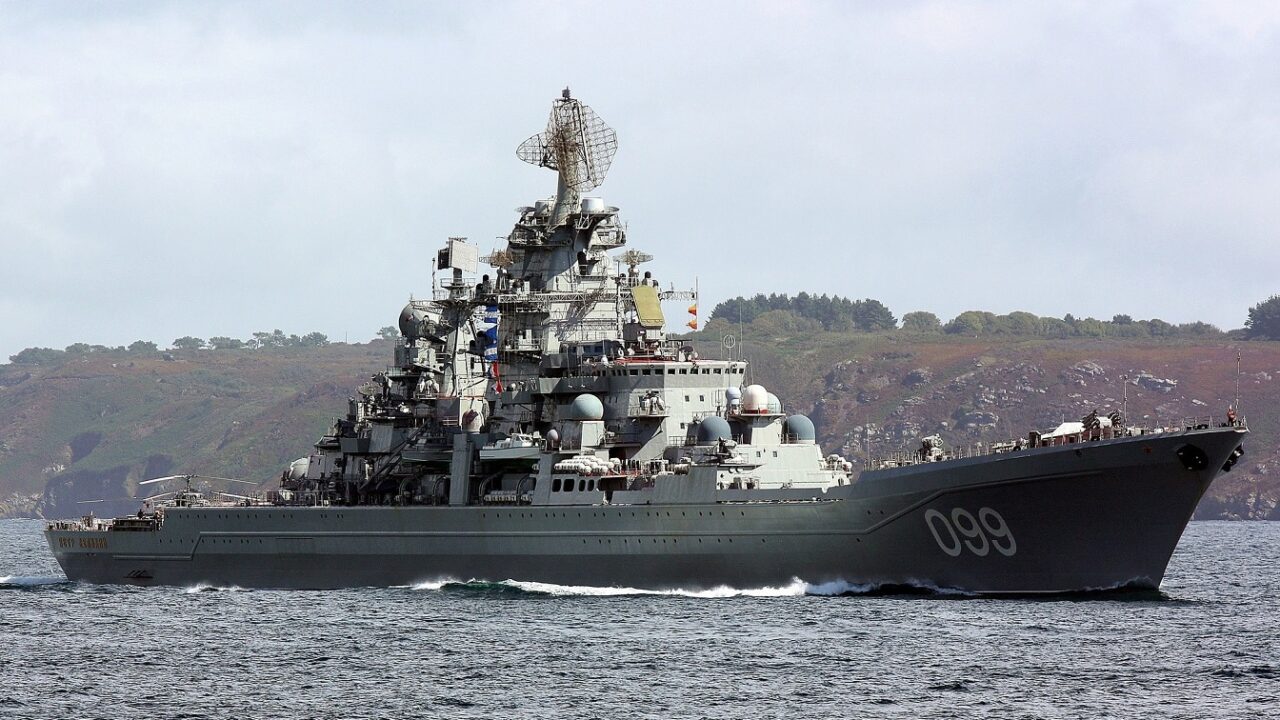The Russian Navy has essentially established a “distant blockade” of Ukraine, cutting off the country from international maritime trade, the UK’s Ministry of Defence announced earlier this week. It also warned that Ukraine faces increased attacks from the sea and that Russia could be preparing to mount amphibious landings.
“Russian naval forces have established a distant blockade of Ukraine’s Black Sea coast, effectively isolating Ukraine from international maritime trade. Russian naval forces are also continuing to conduct missile strikes against targets throughout Ukraine. Russia has already conducted one amphibious landing in the Sea of Azov and could look to conduct further such operations in the coming weeks,” the British Ministry of Defense said on Sunday in an intelligence update posted on Twitter.
In recent days, Russian warships have already been shelling targets in the suburbs of Odessa, Pentagon officials stated, USNI reported.
“We do see increased naval activity in the northern Black Sea,” a senior defense official told reporters on Wednesday, adding, “We also have observed on our own the shelling of some town outside of Odessa near Odessa, but not in Odessa. We believe these are… from Russian warships in the Black Sea.”
On Friday, Sky News reported that Russian warships could be seen off the coast of Ukraine near Odessa. Russia’s armada has been growing by the day.
As previously reported, Moscow had deployed six amphibious landing ships into the Black Sea since the start of the year to join landing vessels that are were already part of the Russian Navy’s Black Sea Fleet. According to USNI News, among the vessels are three Ropucha-class tank landing ships, which are capable of landing 10 main battle tanks and 350 troops ashore. In addition, the larger Ivan Gren-class, also in the Black Sea, can deploy 13 main battle tanks and carry some 300 troops while also fielding two attack helicopters.
Russia may have held off on launching an amphibious assault for now, as it wants to avoid a risky operation that could result in its forces being pushed back into the sea. The thousands of Russian troops that landed on the Sea of Azov coast were met with virtually no resistance, and the Russian forces are believed to lack the skills required to make a contested amphibious landing.
More Amphibious Forces Coming?
It has also been reported this week that additional amphibious forces could be heading from the Russian Navy’s Pacific Fleet to support the war effort. Japanese officials had announced that four Russian Navy amphibious warfare ships had transited the Tsugaru Strait on Tuesday and Wednesday.
The Landing Ship Tanks (LSTs) included the RFS Admiral Nevelskoy (055), RFS Oslyabya (066), RFS Peresvet (077) and RFS Nikolay Vilkov (081) – the entire complement of the Russian Navy Pacific Fleet’s amphibious vessels.
While it is now believed the ships are headed to the Black Sea, it will be up to the government in Turkey whether the ships will be allowed to transit the Dardanelles and Bosphorus, which have been closed to warships. Only Russian warships returning to a home base in the Black Sea are to be allowed passage.
The decision to restrict warships is a power given to Turkey by the Montreux Convention of 1936.
“If the warship is returning to its base in the Black Sea, the passage is not closed,” Turkish Minister of Foreign Affairs Mevlüt Çavu o lu told reporters last month. “We adhere to the Montreux rules. All governments, riparian and non-riparian, were warned not to send warships across the straits.”
Foreign Vessels Struck in Potential Warzone
Russia’s invasion of Ukraine and de facto blockade is also impacting hundreds of seafarers on more than 100 foreign-flagged cargo vessels, which are now stranded in Ukrainian waters in the Black Sea and the Sea of Azov. Russia took control of the crucial waterway when it invaded Ukraine on February 24.
According to the United Nation’s International Maritime Organization, which conducted an emergency meeting last week, currently estimates that upwards of 2,000 men could be affected, although some likely have already been repatriated.
The International Chamber of Shipping as well as multiple maritime unions have called for the immediate creation of safe “blue corridors” to enable those vessels and their crews to leave without the risk of facing fire from missiles or mine strikes.
For now, it seems those commercial vessels may be forced to wait it out. For the Russian warships potentially heading from the Pacific, it will be up to Ankara to decide if the trip was a wasted one.
Now a Senior Editor for 1945, Peter Suciu is a Michigan-based writer who has contributed to more than four dozen magazines, newspapers and websites. He regularly writes about military hardware, and is the author of several books on military headgear including A Gallery of Military Headdress, which is available on Amazon.com. Peter is also a Contributing Writer for Forbes.

